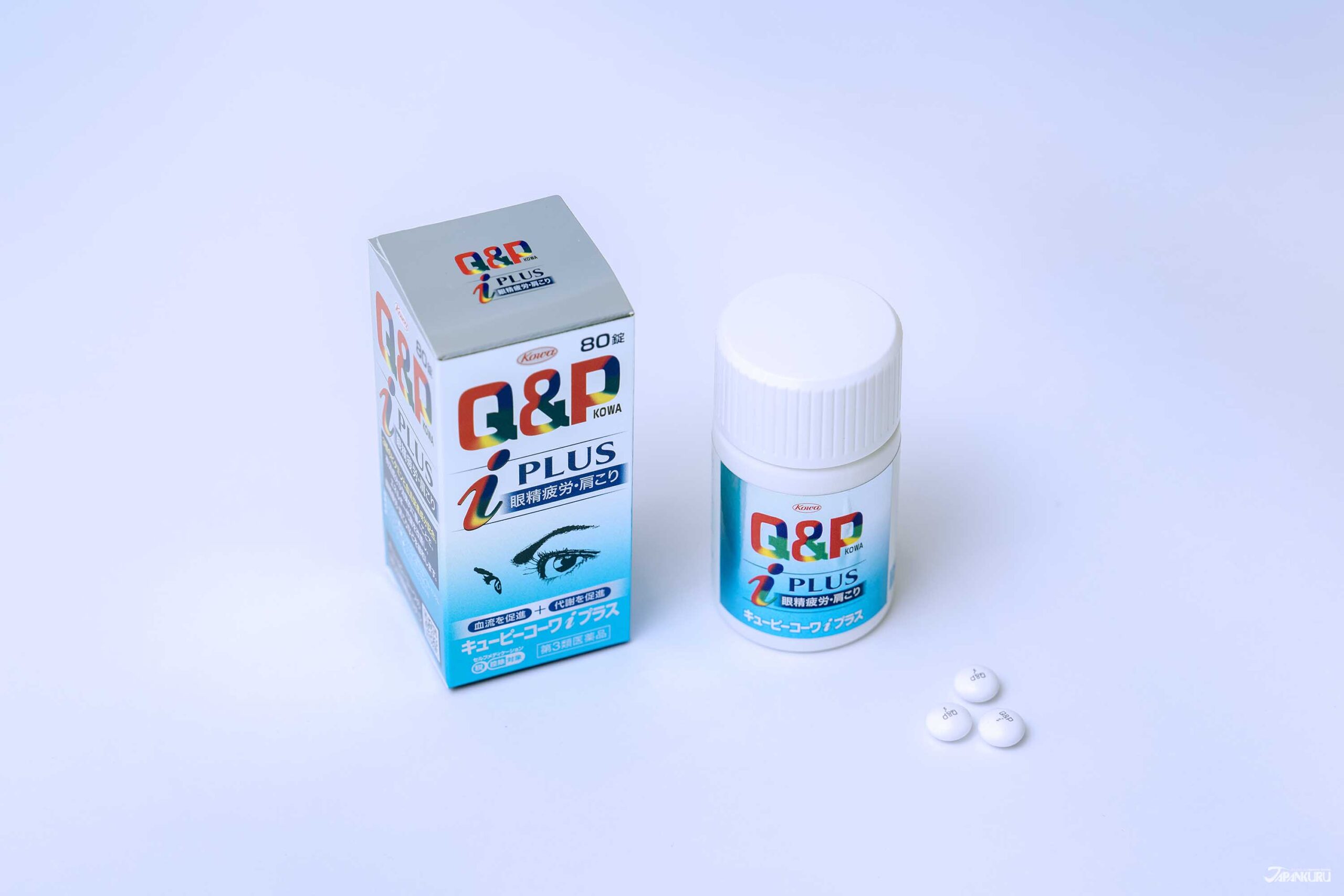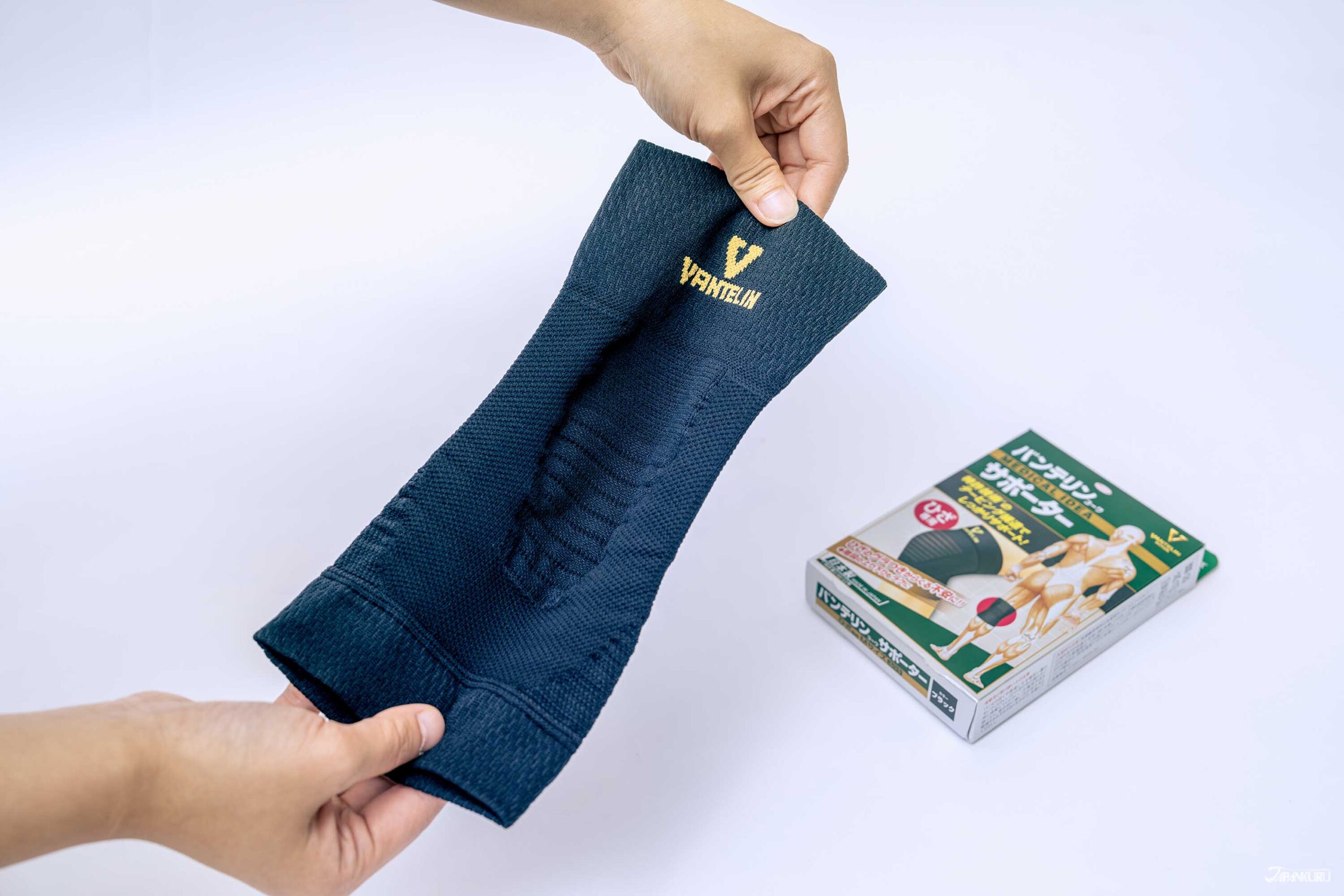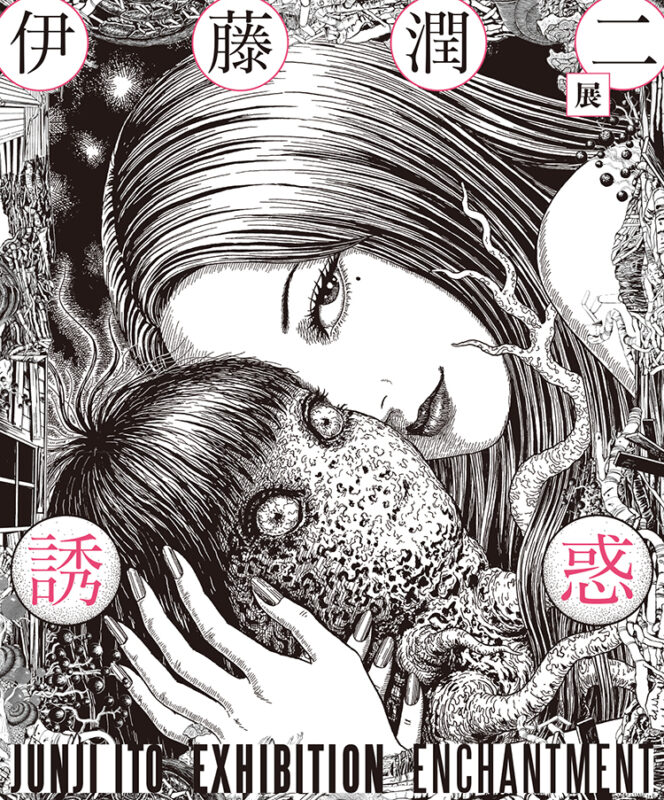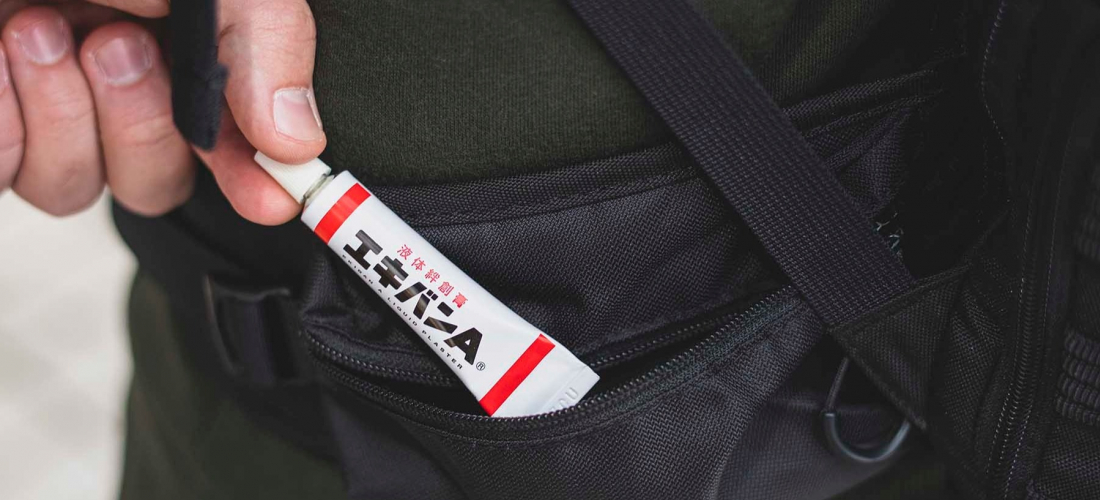
Japanese Drugstore Shopping List: 3 Japanese Daily Personal Care Items to Make Modern Life a Little Better
This article contains sponsored content.
Aching shoulders, tired eyes, digestive problems, and stiff joints are so common these days they almost feel like symptoms of the modern world, where so many of us spend hours each day sitting at a desk and staring at a screen. But the Japanese pharmaceutical company KOWA offers a variety of practical daily self care essentials that can make a world of difference, and we've chosen three of our favorites.
CONTENTS
Practical Japanese Self-Care Products for Modern Living

Whether you work with your hands or you spend your days at a desk, modern life comes with a collection of ailments, from the eye strain that comes from staring at a screen to the digestive problems that often result from sitting in one place all day. Fortunately, Japanese drugstores are full of innovative products made to soothe all your aches and pains, including many brands and unique products still found only in Japan. One major Japanese pharmaceutical company with a focus on combatting everyday issues to improve daily life is KOWA, which has made a name for itself even outside of Japan thanks to their popular gastrointestinal medicine CABAGIN KOWA α ![]() , which can help with bloating, stomach pain, and nausea. Intrigued by the unusual ingredients found in CABAGIN KOWA α, here at Japankuru we found ourselves curious about the rest of their lineup too. If you (or your loved ones) suffer from eye fatigue, stomach discomfort, or even knee joint pain, you might want to add these three practical personal care products from KOWA to your Japanese drugstore shopping list!
, which can help with bloating, stomach pain, and nausea. Intrigued by the unusual ingredients found in CABAGIN KOWA α, here at Japankuru we found ourselves curious about the rest of their lineup too. If you (or your loved ones) suffer from eye fatigue, stomach discomfort, or even knee joint pain, you might want to add these three practical personal care products from KOWA to your Japanese drugstore shopping list!
Find Relief for Chronic Eye Fatigue
Q&P KOWA i PLUS
(Recommended for: eye strain, muscle pain, stiff shoulders.  )
)

It’s hard to avoid screen time these days, and after spending hours every day staring at our phones and computers, many of us suffer from dry and tired eyes. To alleviate these symptoms, people often rely on over-the-counter eye drops, especially “cooling drops” that contain a refreshingly minty dose of menthol. But the truth is, while menthol can provide immediate relief, the ingredient sometimes irritates sensitive eyes even more.


For a more long-term solution without the side effects, prescription eye drops from the doctor are an option, but we think the more convenient choice would be to try out Q&P KOWA i PLUS, which is taken orally instead of being applied directly to the eyes.


Q&P KOWA i PLUS uses seven active ingredients to help your eyes feel their best, and give you a full-body refresh too. Hepronicate expands peripheral blood vessels to improve circulation. Magnesium/potassium L-aspartate and benfotiamine (vitamin B-1/thiamin) help to relieve physical fatigue, like eye strain. Oxoamidine powder promotes the absorption of vitamins and even helps with blood circulation. The last three, cyanocobalamin, gamma oryzanol, and tocopherol calcium succinate, work together to facilitate the function of muscles and nerves. Together, these seven active ingredients help to relieve eye strain by tackling the problem at its source, improving the blood flow your muscles and organs really need. The tablets are not only effective on dry, tired eyes, but they also help to relieve stiff backs, from necks and shoulders all the way down to the lower back. Tackle all the discomfort of the modern eye, dry and tired from staring at screens all day, and find relief in just one simple step! If eye drops from the drugstore just won’t cut it, or if you’re interested in trying a different kind of eye care product, you might want to give the pills of Q&P KOWA i PLUS a try.
Dosage:
Adults (15 years+): Take 2-3 tablets once a day. (Can be taken any time of day, regardless of meal times.)
*Not suitable for those under 15.
Product Details (en)
Use the Power of Japanese Natto for Good Gut Health
THE GUARD KOWA INTESTINAL REGULATION TABLETS α3+

As hard as we all might try, sometimes it’s a challenge to maintain the kind of regular diet and excercise needed for good gut health, especially as we age. If you’re feeling stuck with symptoms like bloating, constipation, or indigestion, then you might want to try “THE GUARD KOWA INTESTINAL REGULATION TABLETS α3+” for daily gut care.
These days we know that maintaining your microbiome is key to a healthy digestive system, which is why eating foods like yogurt and even natto (Japanese fermented soybeans) for the natto, lactic acid, and Bifidus bacteria (or even taking individual supplements) is all the rage. If you want a convenient over-the-counter solution, however, we recommend this option from KOWA.

THE GUARD KOWA INTESTINAL REGULATION TABLETS α3+ actually contain three types of probiotics, combining the beneficial bacteria from natto with the lactobacillus and bifidobacteria from yogurt, and incorporating it all into one convenient pill. These probiotics make it hard for harmful bacteria to reproduce inside the gut by fermenting sugars and turning them into acetic and lactic acid, and these pills maximize effectiveness by giving the beneficial bacteria a chance to reach your intestines alive. THE GUARD KOWA INTESTINAL REGULATION TABLETS α3+ give your weak stomach the boost it needs and help relieve uncomfortable gassiness too, making them an ideal everyday tool for improving your gut health.


Whether you’re a desk-bound office worker spending a little too long stuck in your office chair every day, or a student in need of digestive support even when your diet isn’t at its most nutritious, this daily gut health product is good for anyone whose digestive tract could use a boost. If you have loved ones who could use a little help with their gut health, it could even make a thoughtful gift from your trip to Japan!
Dosage: Take three times a day.
Adults (15 years+): 3 tablets per dose
Ages 8-14: 2 tablets per dose
Ages 5-7: 1 tablet per dose
*Not suitable for those under 5.
Product Details (en)
Japanese Joint Care For Better Stability and Mobility
VANTELIN KOWA KNEE SUPPORT



When your knees are giving you trouble, just follow the lead of some of Japan’s most famous athletes, and rely on the dependable support of the VANTELIN KOWA KNEE SUPPORT. KOWA’s patented U-shaped taping technology (Patent No. 5165123) is designed to form a unique structure that cradles your knee down to the kneecap, providing ample support for everyday mobility, and the slitknit construction with breathable mesh makes it comfortable to move around in without feeling overly stuffy and restricted. If taping up your knee doesn’t give you the stability you need, or if you want something a little more convenient for more active days, this knee support is a great everydear joint care option for people of all ages.

The VANTELIN KOWA KNEE SUPPORT is available in black, pearl beige, silver grey, and light pink, with sizes ranging from small to extra-large, so you can easily find the perfect fit. There are even knee supports specially constructed for extra warmth or for breathability, along with a VANTELIN KOWA BACK SUPPORT, providing a whole lineup of support products to give you stability where you need it most.
Usage Instructions: Holding the V-mark to the front, insert your leg, and adjust the U-shaped ankle support for maximum comfort.
Sizes:
Small: 31cm-34cm
Medium: 34cm-37cm
Large: 37cm-40cm
Extra-large: 40cm-43cm
*Around the knee.
Product Details (en)
Clever and Efficient Health Solutions From Japan

When life gets busy, it’s easy to let personal care fall by the wayside, neglecting health in favor of convenience. But health management doesn’t always have to be complicated! Instead of trying to keep to exhausting routines, address your tired eyes, uncomfortable stomach, and achy joints by giving these three products from KOWA a try. With the Japanese yen so weak these days, it’s a great time to go shopping in Japan, so get ready for your next trip with these Japanese drugstore recommendations!
Check out more of our favorite Japanese drugstore recommendations here!
For more info and updates from Japan, check Japankuru for new articles, and don’t forget to follow us on X (Twitter), Instagram, and Facebook!
COMMENT
FEATURED MEDIA
VIEW MORE
A Tokyo Winter Must-See: Tokyo Mega Illumination Event Period: November 2, 2024 ~ January 12, 2025 *Closed Nov 4~8, Dec 1~6, Dec 25~ Jan 1. End date may be subject to change. Hours: 16:30 – 21:00 (final admission 20:00) *Opening hours may vary depending on scheduled events or congestion, please check the official website for details. Directions: 2 min. walk from Tokyo Monorail Oikeibajo-Mae Station, 12 min. walk from Keikyu Tachiaigawa Station #japankuru #tokyowinter #tokyomegaillumination #megaillumination2024 #tokyocitykeiba #도쿄메가일루미네이션 #tokyotrip #oiracecourseillumination

Tokyo Shopping Spot Recommendation: New Balance Kichijoji #newbalance #newbalancekichijoji #newbalancejapan #japanesesneakerheads #shoppinginjapan #japantrip #도쿄여행 #도쿄쇼핑 #뉴발란스 #일본한정 #일본패션 #日本購物 #日本買衣服 #NB #日本時尚 #東京購物 #รองเท้าnewbalance #นิวบาลานซ์ #รองเท้าผ้าใบ #ช้อปปิ้ง #คิจิโจจิ #japankuru

See Kyoto Clearly With Your New Glasses #japankuru #kyoto #jins #교토여행 #진즈 #京都 #교토수족관 #가모가와 #kamogawa #kyotoaquarium

The First Japanese Converse Flagship: CONVERSE STORE HARAJUKU #japankkuru #conversejp_pr #conversejapan #harajuku #tokyotrip #converse #tokyoshopping #匡威 #帆布鞋 #東京購物 #原宿 #日本時尚 #일본쇼핑 #일본컨버스 #일본한정 #하라주쿠 #일본패션 #일본스트릿 #รองเท้าconverse #รองเท้าผ้าใบ #ช้อปปิ้ง #ฮาราจูกุ #คอนเวิร์ส

Japanese Makeup Shopping • A Trip to Kamakura & Enoshima With Canmake’s Cool-Toned Summer Makeup #pr #canmake #enoshima #enoden #에노시마 #캔메이크 #japanesemakeup #japanesecosmetics

⚔️The Robot Restaurant is gone, but the Samurai Restaurant is here to take its place. Check it out, and don't forget your coupon! 🍣신주쿠의 명소 로봇 레스토랑이 사무라이 레스토랑으로 부활! 절찬 쿠폰 발급중 💃18歲以上才能入場的歌舞秀,和你想的不一樣!拿好優惠券去看看~ #tokyo #shinjuku #samurairestaurant #robotrestaurant #tokyotrip #도쿄여행 #신주쿠 #사무라이레스토랑 #이색체험 #할인이벤트 #歌舞伎町 #東京景點 #武士餐廳 #日本表演 #日本文化體驗 #japankuru #japantrip #japantravel #japanlovers #japan_of_insta

Japanese appliance & electronics shopping with our KOJIMA x BicCamera coupon! 用JAPANKURU的KOJIMA x BicCamera優惠券買這些正好❤️ 코지마 x 빅 카메라 쿠폰으로 일본 가전 제품 쇼핑하기 #pr #japankuru #japanshopping #kojima #biccamera #japaneseskincare #yaman #dji #osmopocket3 #skincaredevice #日本購物 #美容儀 #相機 #雅萌 #日本家電 #일본여행 #면세 #여행꿀팁 #일본쇼핑리스트 #쿠폰 #일본쇼핑 #일본브랜드 #할인 #코지마 #빅카메라 #japankurucoupon

Odaiba's DiverCity Tokyo Plaza is home to the famous real-size 20m-tall Unicorn Gundam, and the popular shopping center has even more Gundam on the inside! Check out the Gundam Base Tokyo on the 7th floor for shelves upon shelves of Gunpla, and the Gundam Base Tokyo Annex on the 2nd floor for cool anime merchandise. Both shops have tons of limited-edition items! #pr #odaiba #tokyo #tokyotrip #japantrip #japantravel #PR #divercity #divercitytokyoplaza #tokyoshopping #gundam #unicorngundam #gundambasetokyo #anime #otaku #gunpla #japankuru #오다이바 #다이바시티도쿄 #오다이바건담 #건담 #일본건담 #건프라 #건담베이스도쿄


























































